
Sunday’s edition of The New York Times had not one, but two cover stories on faggotry and its discontents. While the Foley-related story had front page placement, this story found itself in the Style section. In it, John Leland delves into the world of the ninth annual Two-Spirit Gathering in Montana. An American Indian term used for people who identify both female and male sentiments in their personal spirituality, Two-Spirit folk were once revered in many American Indian communities. Leland reports:
In tribal tradition, when children exhibited interest in activities not associated with their gender…they were singled out as inhabited by dual spirits… “It was never about sexuality, ” [University of Vermont assistant professor Brian Joseph] Gilley added. “It was about your role in the community.”
With the rise of Christian proselytization, however, these two-spirited folk found themselves at the bottom of the totem pole, so to speak. The gathering in Montana works to revive that proud past and allow two-spirit people to celebrate themselves, their traditions, and ponder change.
[Two-Spirit] members say they confront anti-gay sentiment from the general culture and from within their tribes, which they attribute to Christian influence.
“We can’t get a Two-Spirit person on our tribal council,” [Two-Spirited Steven] Barrios said. “…What we’re doing now is coming together, showing documentation that we have a history.”
Now that’s what we call gay history.
We understand not all of you have New York Times access, so we’ve printed the entire story after the jump. You can thank us with amazing comments.
“A Spirit of Belonging, Inside and Out”
By John Leland
ALISTAIR BANE went to his first weekend gathering five months ago and was so nervous that he barely participated. By the time of his second, last month, he had sewn his own outfit and was comfortable enough to dance in the powwow and the drag show.
How about we take this to the next level?
Our newsletter is like a refreshing cocktail (or mocktail) of LGBTQ+ entertainment and pop culture, served up with a side of eye-candy.
“This has been a big thing for me,” said Mr. Bane, who is a mixed-blood Eastern Shawnee. “If somebody had talked to me when I was 16 and said people like me were once respected, my life might have been different.”
The occasion was the ninth annual Montana Two-Spirit Gathering, a weekend retreat here in northwestern part of the state for a few dozen American Indians who define themselves as embodying both male and female spirits. Many are refugees from the gay or lesbian bar circuit who are now celebrating an identity among themselves that they never knew existed, in a setting without drugs or alcohol. Some identify themselves as gay or lesbian; others as a third or fourth gender, combining male and female aspects.
Since the term “Two Spirit” was coined at a conference for gay and lesbian natives in the early 1990’s, Two-Spirit societies have formed in Montana as well as in Denver; Minnesota; New York State; San Francisco; Seattle; Toronto; Tulsa, Okla.; and elsewhere, organized around what members assert was once an honored status within nearly every tribe on the continent.
“A lot of our tribal leaders have their minds blocked and don’t even know the history of Two-Spirit people,” said Steven Barrios, 54, who lives on a Blackfeet reservation in northwestern Montana, and who has been open about his sexual orientation since he was a teenager. Mr. Barrios cited a small and sometimes contested body of anthropological evidence that suggests that before the arrival of Christian missionaries, many tribes considered Two-Spirit people to be spiritually gifted and socially valuable.
Like the Montana group, most Two-Spirit societies rely on financing from the federal government – usually under public health auspices – and few are recognized by the members’ tribes. The societies hold their own powwows but most do not dance together in general tribal ceremonies. Members say they confront anti-gay sentiments from the general culture and from within their tribes, which they attribute to Christian influence.
“We can’t get a Two-Spirit person on our tribal council,” Mr. Barrios said. “We had a historian from our tribe on the reservation, and when he was asked what they did with Two-Spirit people, he said, ‘We killed them.’ But before the Christians came, Two-Spirit people were treated with respect. What we’re doing now is coming together, showing documentation that we have a history.”
Whatever their traditions, modern tribes often have complex relationships with homosexuality. In 2004 Kathy Reynolds and Dawn McKinley, two Cherokee women in Tulsa, petitioned to marry under tribal law, setting off a complicated legal and political battle that spread to other tribes. The women, who became unwilling public figures, were granted the right to marry by the Cherokee Judicial Appeals Tribunal but have yet to file their marriage certificate and complete their marriage. In response, several tribes, including the Cherokee Nation, passed laws defining marriage as a union between a man and a woman.
Mr. Bane, 40, said he first heard about Two-Spirit gatherings in his late 20’s but did not attend one until he went to a gathering in Tulsa five months ago. As an adolescent, when he told his parents he was gay, the sense of rejection led him to leave school and home. He had little connection with his Indian heritage (most people at the gathering used the term Indian more often than Native American or First Nation), and after leaving home he found community with people living on the street, using heroin and selling his body. “I felt that at least somebody wanted me for something,” he said. Even when friends died of overdoses or took their own lives, he said, “We didn’t see ourselves as worth more than the life we lived.”
Like several others at the gathering, he said that at gay clubs he always felt he had the wrong hair or clothes, and felt pressure not to come off as “too Indian.” He said: “I can’t count the number of guys who have made comments about ‘If you cut your hair you’d be cute.’ If you conform to the whole Western culture idea of what a gay man is supposed to act like, then people want you around. But if not, you are either invisible or people outwardly make it clear that they don’t want you around.”
He added: “When I went to the gathering in Tulsa in May, there was a sense of acceptance I had never felt before. The mistakes I made in my past didn’t matter. What mattered was I came home. It goes beyond sexuality to a cultural role. That was important to me.”
The term for Two-Spirit people is different in each tribal language, but the practices and traditional social position of Two-Spirits is fairly consistent, said Brian Joseph Gilley, an assistant professor of anthropology at the University of Vermont and author of “Becoming Two-Spirit: Gay Identity and Social Acceptance in Indian Country.” In tribal tradition, when children exhibited interest in activities not associated with their gender – for boys, typically cooking or sewing; for girls, hunting or combat – they were singled out as inhabited by dual spirits, Mr. Gilley said.
In some tribes they were considered spiritually gifted, and might have been sought sexually for their powers. Often Two-Spirit people helped raise children or accompanied war parties as surrogate wives, Mr. Gilley said. At the Montana gathering, one man brought his two grandchildren, whom he was raising. “It was never about sexuality,” Mr. Gilley added. “It was about your role in the community.”
John Hawk Co-Cke’, whose parents descended from four different tribes and were Methodists, said he heard about Two-Spirit traditions in the 1980’s, when he started seeing a Indian therapist. He was having high-risk anonymous sex with men in parks and other public places and also drinking heavily at gay bars to compensate for feeling undesirable.
“At the time I had nothing to do with my Indian-ness,” he said. “I didn’t want to be more different.” The therapist, he said, told him, “‘You need to come home. Warriors would never put themselves in that position.’”
At the gathering Mr. Co-Cke’ wore women’s makeup, and at the powwow he wore a traditional native woman’s dress. Since embracing his Two-Spirit identity, he said, he has stopped heavy use of drugs and alcohol and is much happier. But he said he does not wear women’s clothing in Tulsa or at a general Osage powwow. “I teach guys: ‘Be smart. You have to remember you live in Oklahoma.’ Because we’ve had guys beat up. ‘As far as your sexuality, please be careful you don’t flaunt it.’ ”
Mr. Co-Cke’ said Two-Spirit gatherings often draw men who are hiding their orientation from their wives. At the Montana gathering several people did not come because of the presence of a reporter because they did not want their orientation to become public knowledge.
For three days, solemn rituals alternated with pop cultural references, high camp and playful but sharp intertribal teasing.
Matthew Reed, 32, who manages a Starbucks franchise in Denver, began the Saturday night powwow by leading an august gourd dance to cleanse the grounds. “Does everyone know how to gourd dance?” he asked, then advised: “Drop it like it’s hot,” a reference to a dance-filled rap video by Snoop Dogg.
As the night grew cold, Joey Criddle, who led a contingent called the “Denver divas,” explained for the group the historical significance of some of the dances and clothing, encouraging each dancer, “You go, Miss Thing.” Mr. Criddle, 45, a respiratory therapist and part Jicarilla Apache, was once married and has four children. He said that in Denver his group was trying to gain credibility and acceptance from tribal leaders by preserving the old language, skills and dances. “The elders will tell you the difference between a gay Indian and a Two-Spirit,” he said, underscoring the idea that simply being gay and Indian does not make someone a Two-Spirit.
Involvement with Two-Spirits has changed Mr. Bane’s life. After the Tulsa gathering he moved to Denver to live near Mr. Criddle’s group, and he stopped dating a man who refused to acknowledge their relationship in public. “I used to think that was O.K.,” he said. “Now I don’t.” He was also embracing some traditionally female tasks and slowly learning to do beadwork. “Beadwork gives you patience for traffic,” he said.
The surprise for his non-native friends, he said, was how much fun the gatherings were. “You read about it and think it’s real serious, and it is,” he said. “But then you have the drag show on the first night. When I told my friends, ‘I gotta get my drag outfit together,’ my white friends, they’re like, ‘What?’ ”
Jaxin Enemy-Hunter, 28, who helped Mr. Bane with last-minute stitching on his moccasins, found it rewarding to see people who were not raised in the Two-Spirit tradition embrace it, but their journey was not his. Growing up on a Crow reservation, he had been singled out early by his great-grandmother and given a double helping of education: studying with the boys and then studying with the girls when the boys played. He described the experience as both high status and extremely stressful.
“A lot of Two-Spirit societies, their focus is to bring the Two-Spirit role to their tribes,” he said. “With my tribe, we had never lost that. The younger generations focus more on the mainstream way of being a gay person, going out and partying, and not having responsibilities and being stressed out.”
Off the reservation, he added, “I would see friends going through hell over being gay. It was just very sad. They didn’t know about our history.”







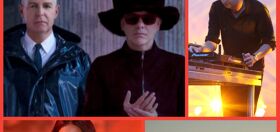


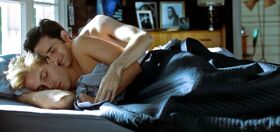



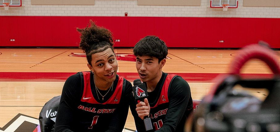
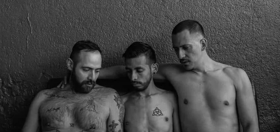

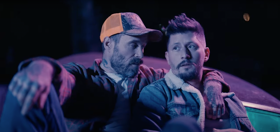

jason
thanks for this fab post
Nick
Uh, I think you missed the point, bud.
It says in the article that two-spirit is about gender, not sexuality. Sorry, but gender noncomformity is not a de facto gay issue.
Marc
I did read the article in the Style section of the NYT on Sunday (thanks to it being so generously donated)…and I’m very glad you re-printed the article here. After reading the article, I found myself wishing that more of us (two-spirited, homosexual individuals, or others “labeled” with terms that are considered “non-traditional”) could find a place of acceptance that is so basic and fundamentally true to ourselves.
G. Silver
Two Spirit;
The way it has been explained to me, is by being two spirit you are neither male or female, but are both. By being both it was said to be, that you are in balance. Never or very seldom was it about sexuality. So I believe the term two spirit is being miss used or is trying to take on a new meaning
Miigwech
G. Silver
Lydia Nibley
The two-spirited perspective transcends the inflexibility of the ideas and beliefs that arrived with the first Europeans.
Many of the indigenous cultures of North America (Navajo culture in particular) value the balance of the masculine and feminine as a way of maintaining sacred order. Gender expression and sexual expression are seen to exist within a rich spectrum, without all of the little boxes of categorization.
Someone who is gifted with a more complex and nuanced understanding of both the masculine and feminine (someone we would describe as GLBTQ) is seen as making a valuable contribution to the whole, and is treated with respect, even reverence. Each tribe with this tradition has a different name for it. The phrase “two-spirit” was created more recently, as a way to explain this concept in a unified way and in english.
As science and medicine continue to explore the reality that nature is diverse and that there are many nuanced expressions of gender and sexuality in the human family, perhaps more of us will adjust our thinking about gender and sexuality by looking to spiritual and cultural perspectives that represent the most traditional of American values.
If you’d like to learn more about the two-spirit concept, and about a documentary about the life and murder of a Navajo two-spirit boy visit http://www.twospirits.org
steven barrios
I just want to thank John Leland for the wonderful job he did on the twospirirt gathering.We have gotten some very positve response from it.We as twospirit people need to let other twospirit people out there know that there is a place for us.We were very honered to have such a respectful reporter there.If anyone is interested on more info please contact me @ [email protected] Also there are some very good books out there. Steven Barrios (Long Time Holy Rain)